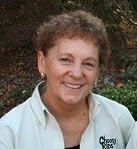By: Steve Sanders, Author of “Moving Matters” and Professor at University of South Florida
When a new baby comes into the home parents naturally ask questions related to the physical development of their infant. Why should my baby be physically active? What types of and how much physical activity should I do with my baby? Infants go through the greatest rate of physical development during the first year of life, and being physically active every day is important for healthy growth and development.
During the first five years of life movement plays an important part in all of a child’s learning. Children learn about the world around them through movement. Those who are more efficient at moving are better able to explore and learn about their environment. Playing with and being physically active with an infant every day will help develop critical movement skills.
Infant Reflexes
When a child is born he does not know how to move and has to learn about and develop physical skills. Movement is first initiated through reflexes. From reflexes children learn to reach, grasp objects, pull and push, and move the head and other body parts. Each time a reflex moves infant muscles a message is sent to the brain and the brain sends messages back to the muscles. This initial process helps the infant to learn how the body can move.
At about 6-8 weeks of age emphasis on activity turns from reflexes to strengthening of muscles and development of balance. Parents should be encouraged to create a stimulating activity environment for their infant that includes a daily activity routine, space for movement, daily tummy time, and lots of appropriate equipment to manipulate.
The future development of all physical skills is based on early learning of balance skills. One of baby’s greatest accomplishments during first year is to stand up and walk. Although walking is all about having the strength and coordination to stand up and move the feet forward, the most important ingredient is balance. Balance comes from the vestibular system located in the inner ear. As fluid in the inner ear moves back and forth a signal is sent telling the brain where the head is and if it is upright. The brain then sends signals to the child’s eyes, muscles and bones to work together to make adjustments to keep the body balanced. The system helps the child to remain steady and upright.
Although muscular strength is not a physical skill, to develop physical skills an infant must develop muscular strength to move his body and body parts. Strengthening muscles does not happen overnight. For example, it typically takes about three months for an infant to have the strength to hold his head up on his own.
A great introductory balance and strength activity for infants is to use a large exercise ball or beach ball (about 24-30 inches in diameter). You can begin this activity at three to four months of age. Place the infant on his back or stomach on the ball. Hold infant with your hands around the child’s middle. Gently and slowly at first, rock back and forth, from side to side, and round and round. Start with slow and steady movements. Do two to three minutes at first, then increase time as baby gets older or increases interest. Learning balance does not happen overnight. The maturation of the balance process is not generally achieved by children until about age 12.
 About the Author: Steve is a professor at the University of South Florida where he is currently involved with the preparation of physical education teachers along with conducting research related to curriculum and instruction in early childhood physical activity. His most recent project is the book series “Moving Matters” in which he outlines for parents of infants, toddlers, and preschoolers a variety of fun physical activity experiences to assist children in developing the needed physical skills to become physically active and healthy throughout life.
About the Author: Steve is a professor at the University of South Florida where he is currently involved with the preparation of physical education teachers along with conducting research related to curriculum and instruction in early childhood physical activity. His most recent project is the book series “Moving Matters” in which he outlines for parents of infants, toddlers, and preschoolers a variety of fun physical activity experiences to assist children in developing the needed physical skills to become physically active and healthy throughout life. 















































